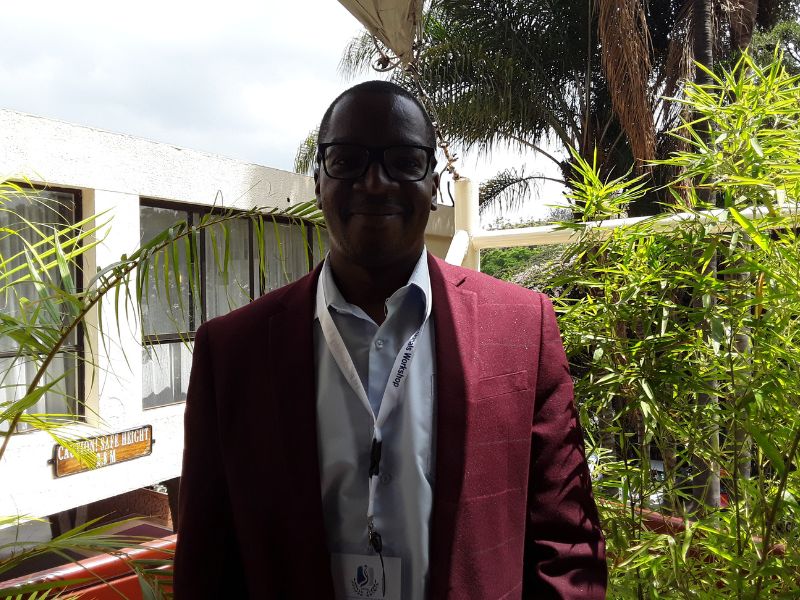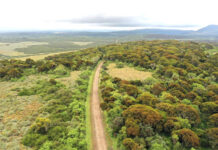By Joyce Chimbi
Nairobi, Kenya: Mycotoxins are toxic secondary metabolites produced by certain types of fungi that can contaminate food and feed crops, says Prof. Meshack Obonyo, a biochemist and an associate professor of biochemistry at Egerton University.
He says that these fungi grow on various crops, including grains, nuts, fruits, and vegetables, particularly under conditions of high humidity and temperatures.
“Exposure to mycotoxins can cause a range of adverse health effects in humans and animals including acute toxicity, carcinogenicity, immunotoxicity, and reproductive toxicity. Some of the most commonly known mycotoxins include aflatoxins, ochratoxin A, fumonisins, and deoxynivalenol (DON),” he expounds.
Mycotoxins are a significant concern for food safety and public health and yet the conversations around solutions, challenges, and opportunities to address mycotoxins as a serious health issue have not gained traction.
Against this backdrop, he says it is essential to monitor and control mycotoxin presence in food and feed crops for effects of exposure are acute short-term or exposure to high doses of mycotoxins in a short period of time or chronic long-term or exposure to small doses over a very long time.
Prof. Obonyo, who is also a Senior Principal: Exchange, Links & Partnerships at the Inter-University Council of East Africa (IUCEA), Kampala, Uganda says IUCEA is the technical arm of the East African community.
The biochemist scientist was speaking during the inaugural two-day Biochemistry and Biotechnology Professionals Society of Kenya (BBPSK) Workshop held on April 24 to 26, 2023. Professionals discussed, among other topical issues, emerging scientific priorities for advancing health research in Africa.

“At IUCEA, an inter-governmental body of the East African Community, we are an advisory body, advising partner states on issues such as those on higher education and networking of institutions within the community. We develop policies that are touching on higher education in matters that are of interest in the East African region,” he says.
IUCEA can therefore inform policy to fill gaps in training to ensure that the study of mycotoxin is included in the curriculum for biochemistry students in the EAC where mycotoxins remain a most pressing health concern.
“IUCEA currently has seven member states and the newest entrant is DRC, we are about to welcome Somalia and Ethiopia into the community. In 2017 there was a declaration that IUCEA is a common high education area. That the biochemistry taught in say USIU should speak to that taught in the University of Khartoum,” Prof. Obonyo expounds.
He says there is a lot of learning and unlearning around mycotoxin for progress in addressing this issue is marred in misconceptions. Myco means mushroom or mold and toxin means poison. Mycotoxins are therefore from mould-like poison, are naturally occurring, and are harmful.
“Mycotoxins are in the community. In fact, they are called inevitable contaminants of food. You are probably exposed. But we only hear about them when people die. For instance, in 2004 when 315 people in Kenya were hospitalized and 117 people succumbed,” he recounts.
“We have misconceptions about mycotoxins. One of the reasons is that we perceive it to be an agricultural problem and farmers are largely advised to dry their foods as the main solution. Mycotoxins are also an economic issue and there are numbers to support this, especially in regard to the free movement of food. So the perception is that this is where the story ends and so why should a biochemist get involved? There are misconceptions that biochemists should only be talking about DNA and so the curriculum does not speak to the issue of mycotoxins,” he expounds.
But food safety, he says, is very much a biochemistry and biotechnology issue. Mycotoxins are increasingly being taken to the laboratory for solutions, and these solutions are brought back to the community to be adopted to strengthen food safety practices.
“A recent brief by the Director General of health in relation to an ongoing health crisis in one of the secondary schools revealed that an aflatoxin poisoning test was among the tests administered to affected students. So there is an awakening about aflatoxins as a health issue,” he says.
Prof. Obonyo confirms that several methods can be used to prevent contamination, including proper storage and processing of crops, selecting resistant crop varieties, and reducing moisture levels in stored grains.
“The Mycotoxin Lab at Egerton University began when we started asking ourselves, what are the possible sources of mycotoxins and we found that it is in everything we eat, it is in milk. A colleague in food science went to a certain County and was getting breast milk from women and the milk tested positive for mycotoxins. That is how serious this issue is,” he emphasizes.
Furthermore, the presence of mycotoxins exposure or acute exposure in animal health is significant. In the earliest biomarker, they used to say, take one-day old chicks and give them washed maize or in liquid form, if they die overnight then that is confirmation aflatoxins were high so death and then stunted growth from long-term exposure.
“But there is something that is rarely talked about, chronic fatigue syndrome. This is a collection of diseases. In every patient, nearly every patient that was presenting with chronic fatigue syndrome had their urine and blood tested for short-term and long-term mycotoxin exposure and the results were positive,” he says.
Moving forward, Prof. Obonyo says there has been commendable progress to address mycotoxins through raising awareness in the community and talking to communities about cultural practices such as post-harvest storage habits that create ideal situations for the fungi to grow and produce toxins.
We are giving alternative and cleaner ways of handling produce. Behavior change campaigns are critical, speaking to people in their local dialects about solutions to the mycotoxin problem is vital.
In this regard, after an intense awareness-raising campaign for a period of two years, the payoff is that in Uganda, Kenya, and Tanzania, there is a growing number of products with visibly imprinted toxic safe labels or aflatoxin-tested labels in human and even dog food.
Nevertheless, there are still technology-related challenges and a lack of access to low-cost and high-impact tests that can help advance science in East Africa and beyond, in matters of mycotoxins.














